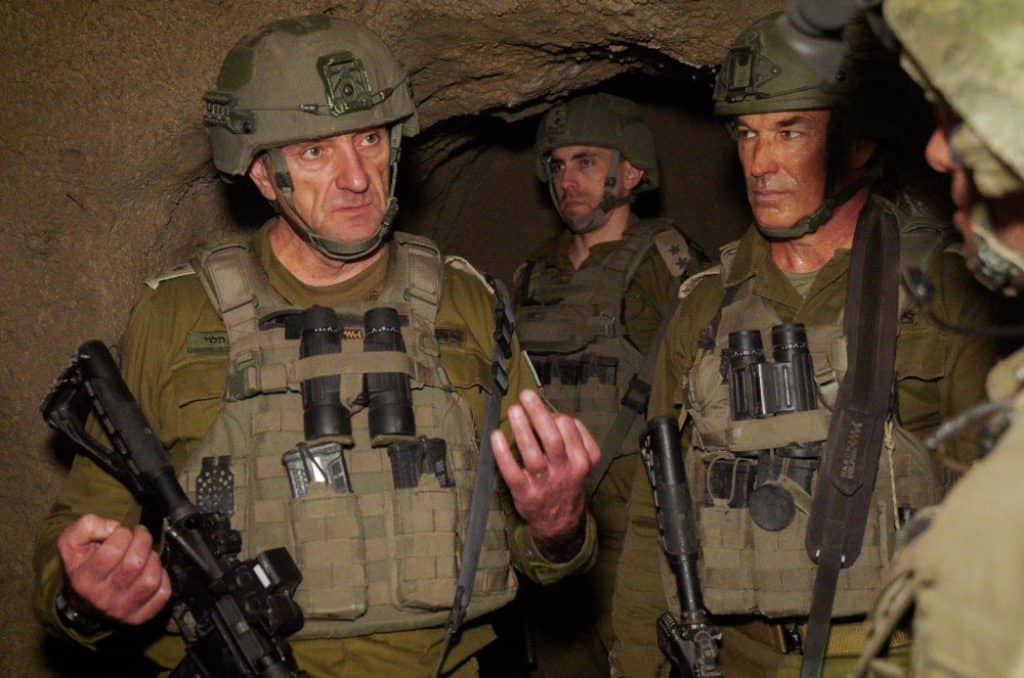
Israeli forces have been operating on the ground in southern Lebanon for a month. During the final days of October, the four divisions in Lebanon continued to move forward methodically, excavating bunkers and tunnels while fighting Hezbollah operatives that posed a threat.
The IDF has lost approximately 30 soldiers in the fighting in Lebanon throughout October. In addition, Hezbollah fires around 100 to 200 rockets a day into Israel. On October 29, an Israeli civilian named Muhammed Naim was killed in the town of Maalot-Tarshiha. His death followed Hezbollah rocket fire that also struck Arab towns in northern Israel, such as Tamra and Majd al-Krum in the last several days. Ninety projectiles launched by Hezbollah crossed into Israel on October 27 and 150 on October 28. Around 60 rockets and several drones were launched at Israel in the first half of October 29.
In southern Lebanon, the IDF captured one Hezbollah commander in the town of Ayta ash-Shab, less than half a mile from the Israeli border. He was taken along with other members of Hezbollah in a sizable tunnel, according to a video released by the IDF. The Golani Brigade, part of the IDF’s 36th Division, was operating in the area at the time.
The IDF continues to describe these operations as “targeted ground raids based on precise intelligence in southern Lebanon.” The Israeli military says the Golani Brigade has eliminated “dozens” of terrorists and uncovered Hezbollah weapons and supplies in areas near the border. “In one of the scans in the area where the troops operated, a concealed underground weapons storage facility was located in thicketed and mountainous terrain,” stated the IDF. The site contained anti-tank missiles, rifles, and mortar shells.
In another area of southern Lebanon, the Paratroopers Brigade, part of the 98th Division, also uncovered an underground “military facility,” the IDF said on October 27. This site was constructed after the 2006 Lebanon war when Hezbollah returned to these areas after Israel fought the group that year. Members of the IDF’s combat engineering Yahalom Unit worked with the paratroopers to uncover a mile-long underground facility. The effort involved underground battles with Hezbollah members who were still present, and Israeli troops found numerous supplies and munitions. “This included food supplies, beds, storage cabinets, electrical power, and an arsenal of weapons—including anti-tank missiles, rockets, RPGs, landmines, and numerous explosive devices,” according to the IDF.
IDF Chief of Staff Lieutenant General Herzi Halevi visited the 98th Division in southern Lebanon on October 28 and went into one of the uncovered Hezbollah bunkers. “We’re located not far from the border; there is a very developed tunnel system here that includes bathrooms, showers, kitchens, and many weapon storage facilities,” he said.
Halevi said the extensive complex illustrated why Israel had to conduct a ground operation in southern Lebanon. “We caught this in time, before it was too late, and this infrastructure must not return here in future generations,” he said. Halevi praised the 98th Division for removing the Hezbollah threat from the Ramim Ridge, an area west of the Israeli city of Kiryat Shmona. Hezbollah has used this high ground to launch rockets and anti-tank missiles into Israeli communities over the past year.
At the northern end of the ridge, the IDF’s 769th Brigade expanded their raids into areas near the village of Kfarkela. This sector is part of the 91st Division’s area of operations. As with the operations of the Golani Brigade and the Paratroopers Brigade, 769th Brigade soldiers found weapons and underground bunkers. In another area of the front under the command of the 146th Division, troops found one Hezbollah command center 24 feet underground. The fighting in this area includes Israel’s 2nd Carmeli Brigade, which suffered several soldiers killed last week, illustrating the difficulty the IDF faces in southern Lebanon.
The Israeli military said “hundreds of Hezbollah military structures” have been found so far in southern Lebanon. Many of these are in civilian areas. For instance, in one unnamed village, the IDF said soldiers discovered a half-ton of explosives. “The infrastructure was excavated by Hezbollah several years ago at the heart of the civilian population of a village in southern Lebanon,” the IDF stated.
In other areas of Lebanon, the Israeli Air Force carried out several airstrikes, although strikes appear to have been reduced over the last week since October 23. One strike hit a Hezbollah weapons storage facility in Tyre, the IDF said. “Parts of Tyre have been used as a central stronghold for Hezbollah and its ‘Aziz’ Unit, which is responsible for carrying out attacks from southwestern Lebanon against Israel,” the Israeli military added. Tyre is a coastal city that contains a number of ancient ruins and a promenade along the waterfront.
The IDF’s operations from October 27 to 29 came as reports say Hezbollah has appointed a new leader, Naim Qassem, who previously served as the group’s deputy secretary general.







